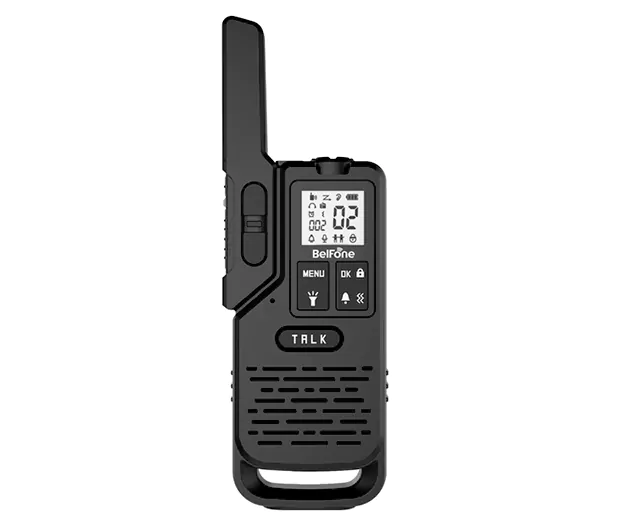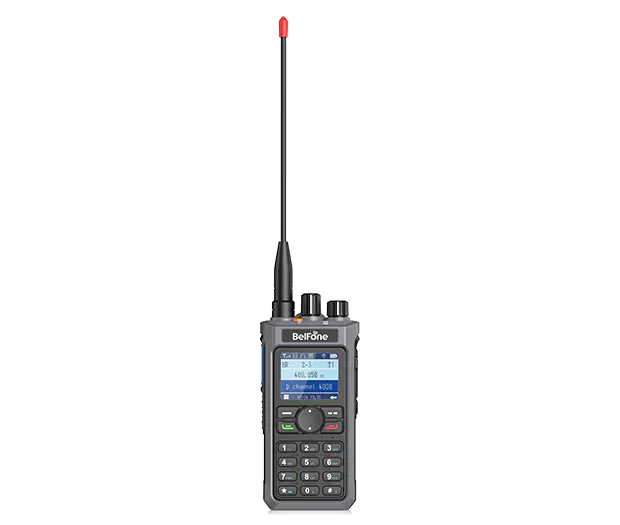The Unmatched Advantages of Two-Way Radios for Hikers
release date:2025-09-28
When venturing into the wilderness, reliable communication isn’t just a convenience—it’s a lifeline, and two-way radios stand out as an indispensable tool for hikers, outperforming smartphones and other devices in critical ways.
First, unwavering connectivity in remote areas sets two-way radios apart. Unlike smartphones, which depend on cell towers (often non-existent in mountainous, forested, or backcountry regions), two-way radios operate on dedicated UHF or VHF frequencies. This means hikers can stay in touch with their group—whether coordinating a rest stop, sharing updates on trail conditions, or checking in on someone lagging behind—even miles from the nearest town. No more staring at a “No Service” icon when staying connected matters most.
Second, they serve as a vital safety tool for emergencies. In situations like a member getting lost, a sudden injury, or encountering hazardous weather (such as a flash flood or incoming storm), two-way radios let hikers alert their group instantly. Many models also include features like NOAA Weather Radios, which broadcast real-time weather alerts—critical for avoiding unexpected storms that can turn a casual hike into a dangerous situation. Unlike a phone’s emergency call (which fails without service), a two-way radio ensures help or warnings reach the group fast.
Third, their long battery life and durability fit the demands of hiking. Most two-way radios run on rechargeable or disposable batteries that last 8–24 hours (far longer than a smartphone’s 4–6 hours of active use), and they’re built to withstand the rough-and-tumble of the outdoors—resistant to drops, dust, and light rain. This reliability means hikers don’t have to stress about their communication device dying mid-trip or breaking after a slip on a rocky trail.
Finally, two-way radios promote group cohesion without distraction. Unlike texting or calling on a phone (which pulls focus from the hike’s scenery and safety), using a two-way radio is quick and intuitive— a simple press of a button to speak or listen. It lets hikers stay connected while still being present, whether sharing excitement about spotting wildlife or reminding the group to stay on the marked trail.
For hikers, two-way radios aren’t just a “nice-to-have”—they’re a tool that blends connectivity, safety, and practicality, turning uncertain wilderness trips into more secure, enjoyable adventures.
First, unwavering connectivity in remote areas sets two-way radios apart. Unlike smartphones, which depend on cell towers (often non-existent in mountainous, forested, or backcountry regions), two-way radios operate on dedicated UHF or VHF frequencies. This means hikers can stay in touch with their group—whether coordinating a rest stop, sharing updates on trail conditions, or checking in on someone lagging behind—even miles from the nearest town. No more staring at a “No Service” icon when staying connected matters most.
Second, they serve as a vital safety tool for emergencies. In situations like a member getting lost, a sudden injury, or encountering hazardous weather (such as a flash flood or incoming storm), two-way radios let hikers alert their group instantly. Many models also include features like NOAA Weather Radios, which broadcast real-time weather alerts—critical for avoiding unexpected storms that can turn a casual hike into a dangerous situation. Unlike a phone’s emergency call (which fails without service), a two-way radio ensures help or warnings reach the group fast.
Third, their long battery life and durability fit the demands of hiking. Most two-way radios run on rechargeable or disposable batteries that last 8–24 hours (far longer than a smartphone’s 4–6 hours of active use), and they’re built to withstand the rough-and-tumble of the outdoors—resistant to drops, dust, and light rain. This reliability means hikers don’t have to stress about their communication device dying mid-trip or breaking after a slip on a rocky trail.
Finally, two-way radios promote group cohesion without distraction. Unlike texting or calling on a phone (which pulls focus from the hike’s scenery and safety), using a two-way radio is quick and intuitive— a simple press of a button to speak or listen. It lets hikers stay connected while still being present, whether sharing excitement about spotting wildlife or reminding the group to stay on the marked trail.
For hikers, two-way radios aren’t just a “nice-to-have”—they’re a tool that blends connectivity, safety, and practicality, turning uncertain wilderness trips into more secure, enjoyable adventures.
Technical support: Longcai Technology

















